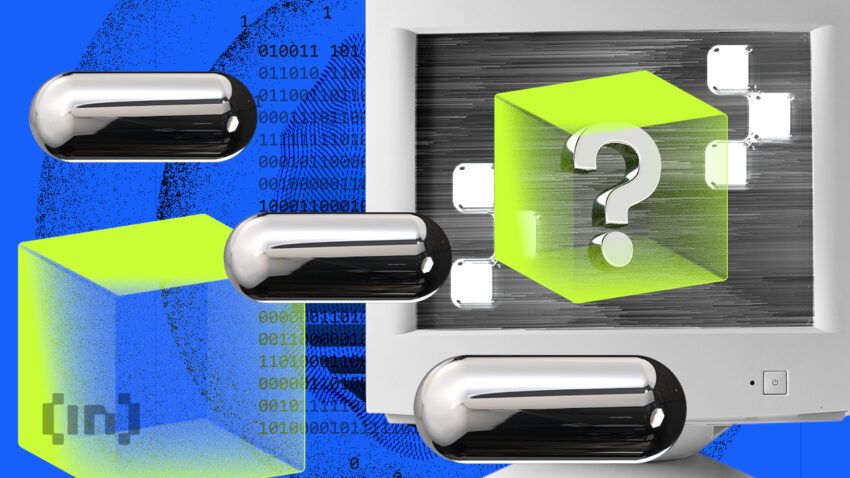MEV, or maximal extractable value, is a relatively new term that has gained significance due to the rise of DeFi protocols. It has become a critical issue in blockchain networks such as Ethereum. MEV is a component of blockchain economics as it offers incentives to miners while raising concerns about fairness, transparency, and security in transaction processing.
However, from the perspective of traditional finance (TradFi), it would be considered insider trading and, therefore, illegal. This guide explains the concept of MEV and how it impacts various blockchain networks such as Bitcoin, Ethereum, and IOTA.
BeInCrypto Trading Community in Telegram: read the hottest news on crypto, get technical analysis on coins & answers to all your questions from PRO traders & experts!
What is maximal extractable value (MEV)?

MEV, or maximal extractable value (previously known as miner extractable value), is the concept of capturing value by miners or validators during the transaction processing stage in a blockchain. Concerns regarding MEV first emerged in 2018 and have been escalating ever since. Critics contend that MEV inflates transaction costs. Furthermore, MEV is accused of engendering chain instability and consuming network processing power.
As always, individual traders who trade with their personal funds are impacted the most by MEV misuse.
MEV is a challenge for blockchain, as it can impact transaction security, efficiency, and fairness. As the popularity of DeFi grows, the competition among miners to include transactions in a block increases. This leads to higher transaction fees. This has the potential to impact the efficiency of networks and make them less accessible to users. MEV can also impact the security of the network by encouraging miners to engage in double-spending attacks or censor transactions.
Node leader election at the root of MEV
The root of MEV is the leader election process in all blockchain systems. In every system, sequencers are periodically elected to choose which transactions will appear in the next block and the order in which they appear. Thus they can manipulate this order and insert transactions to maximize their profit.
In some systems, sequencers are miners, others validators, and in some systems, they are exported to another layer. But regardless of how they interact with the network, a sequencer can always perform maximal extractable value.
How does maximal extractable value (MEV) work?
In MEV, miners extract value by manipulating the order in which transactions are included in a block and taking advantage of arbitrage opportunities or other market inefficiencies. Miners can also engage in transaction frontrunning, where they attempt to exploit price movements by executing trades before other users. In addition, MEV can be used to censor transactions. Miners exclude certain transactions from the blockchain to manipulate the market.
The most popular types of MEV include:
Front running
This extracts MEV by exploiting inside knowledge about big transactions before they hit the market. Bots crawl mempools and copy a transaction with an increased gas price, moving it forward in the priority chain ahead of the original transaction. The bots then enter their sell order at a lower price than the original transaction. This results in sandwich trading when all transactions are executed.
Sandwich trading
Taking it further, the bots enter their sell order at a lower price than the original transaction. When all these transactions are executed, this is known as sandwich trading.
Liquidation
Liquidation: When an MEV strategy targets liquidity loans issued after price oracle updates, it is known as liquidation. This type of attack involves exploiting the difference in the value of collateral assets before and after a liquidation event.
Time bandit
This attack rewards miners for reorganizing past blocks. If the reward is high enough, miners could be incentivized to put forward competing blocks containing adjusted transactions at the expense of users and other network stakeholders.
Slippage tolerance
MEV can also be observed in the context of slippage tolerance. Slippage is a measure of how much the price of an asset in a liquidity pool can fluctuate due to a trade. Liquidity pools with higher liquidity experience less slippage, while those with lower liquidity experience more slippage.
Suppose Trader A sees a waiting order and knows that Trader B is willing to tolerate a slippage of 1%. In that case, Trader A can purchase the asset up to the maximum price that Trader B is willing to tolerate. Subsequently, Trader A can sell the asset immediately after Trader B buys it for a 1% higher price, resulting in a profit.
This type of behavior is commonly viewed as predatory and unprofitable for small trades due to gas fees. It is only problematic on blockchains like Ethereum, where transaction ordering is possible.
Arbitrage
Arbitrage in DeFi involves purchasing undervalued assets on one exchange and then selling them at a higher price on another exchange. This process is generally considered beneficial for DeFi since it helps balance prices between markets, reduces fragmented liquidity, and promotes the development of strong markets. Arbitrage usually occurs within the same block on the Ethereum network and in sequential blocks on platforms where transaction ordering is not possible.
Traders aim to quickly submit their transactions to front-run other traders when transactions can be ordered. This real-time process results in almost no delay in price equalization on DEXs.
Ways to minimize maximal extractable value (MEV)

To minimize the impact of MEV, traders can employ various tactics like setting limits on slippage in their buy/sell transactions. This ensures that the order is canceled automatically if the transaction price shifts beyond the limit.
DApp designers can include design elements to keep transactions hidden from attackers in smart contracts. However, these measures alone are insufficient in protecting against the range of tempting incentives for miners to exploit MEV, given that miners are rational economic actors.
MEV in Bitcoin
MEV is not a significant issue in Bitcoin as it does not have smart contracts, and transactions are processed sequentially. However, maximal extractable value can still occur in Bitcoin due to the use of transaction fees. Miners can prioritize transactions with high fees, leading to delays and increased transaction fees.
MEV in Ethereum
Maximal extractable value is a crucial issue in Ethereum due to its complex smart contract ecosystem, where various protocols interact to execute transactions. MEV can impact the fairness, transparency, and security of transaction processing, as miners can reorder transactions, front-run, or execute a sequence of transactions for their benefit. Various MEV extraction tools, such as Flashbots, have emerged to mitigate the impact of maximal extractable value in Ethereum.
Altchain solutions to MEV
Some altchains are developing innovative structural solutions to avoid encountering problems with MEV. For instance, IOTA is a feeless blockchain that does not rely on miners to validate transactions. Instead, users validate transactions by confirming previous transactions. Smart contract transactions aren’t ordered by a leading block producer and don’t wait in a mempool to be transacted. So, the transactions cannot be manipulated for value extraction. This makes MEV attacks such as sandwich attacks or front running either impossible or very difficult.
Maximal extractable value is a powerful force in an evolving field
In conclusion, MEV has emerged as a powerful force in the world of blockchain technology, enabling miners to capture additional revenue beyond traditional block rewards. While MEV presents both opportunities and challenges, its impact on the blockchain ecosystem cannot be ignored. As the crypto industry continues to evolve, it will be fascinating to see how MEV shapes the behavior of miners and other participants in the blockchain space.
Frequently asked questions
What is MEV?
Why is MEV a problem in blockchain?
What are popular examples of MEV?
Can MEV be eliminated in blockchain?
About the author
William Sanders is the Director of Research at the IOTA Foundation, which maintains the IOTA protocol. He leads a team of researchers to find cutting-edge solutions to pressing problems in the DLT space. Previously, he was a mathematician specializing in Commutative Algebra and Category Theory at the Norwegian University of Science and Technology.
Disclaimer
In line with the Trust Project guidelines, the educational content on this website is offered in good faith and for general information purposes only. BeInCrypto prioritizes providing high-quality information, taking the time to research and create informative content for readers. While partners may reward the company with commissions for placements in articles, these commissions do not influence the unbiased, honest, and helpful content creation process. Any action taken by the reader based on this information is strictly at their own risk. Please note that our Terms and Conditions, Privacy Policy, and Disclaimers have been updated.




